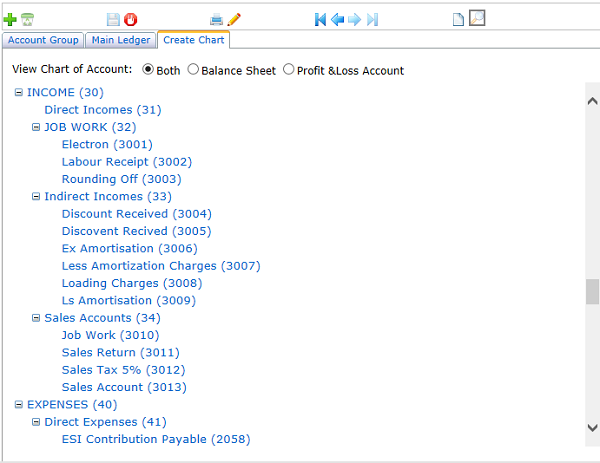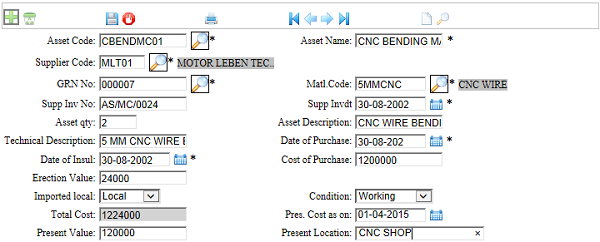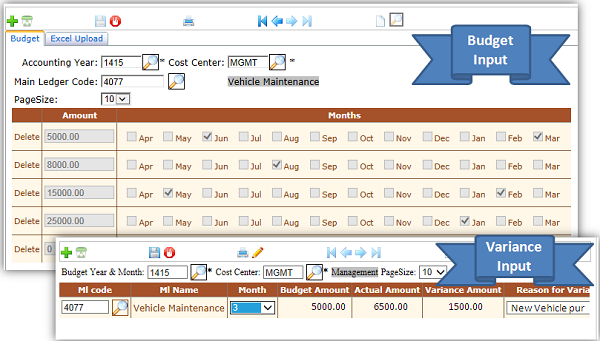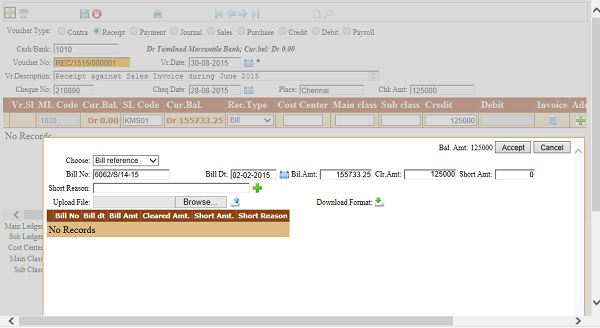|
|
Accounts
|
|
In Ultimate ERP, every financial transactions from each module is linked to Accounts module. The automatic posting of financial transaction from Sales, Production, Material, Payroll modules helps you to avoid duplicate data entry work. Also it happens whenever the financial transaction is happening.
The Accounts module takes care of all accounts related entries and all their impact on the company. With the help of the online Dashboard system, the Management can take immediate decision. Management and Accounts Manager can know the financial position of the company at any point of time.
Drill-down approach is applied from top level Accounts report to voucher entry level. All important accounting reports like Trial Balance, Profit and Loss Statement, Balance Sheet, Sundry Debotors Control account, Sundry Creditors Control account, Fund-flow statment etc are part of this powerful Module of Ultimate ERP.
All account heads applicable in an organization are structured in a tree form called 'Chart of Accounts' with 4 top level groups : Asset, Liability, Income & Expense. In the Configuration form of the ERP, we map these accounts head to various financial transactions occurred in other Modules. This mapping is a one time affair which cannot be altered once a transaction is registered in that head.
|

|
|
Asset Register is an inbuilt one where details about each Fixed Asset is collected through Asset Master input form.
|

|
|
Depreciation on each asset is calculated once in a year and posted in Accounts.
Budget Control is another important feature of Ultimate ERP's Accounts Module. As a planning tool, Accounts team is collecting Expense Head wise budgetory plan from each department in advance for each accounting year. It is fed into ERP either by Accounts team or by individual department. When expenses are booked, it is mapped to each budgetory conrol head which is a combination of Company + Department + Expense head + Year + Month. Deviations against each budgetory head has to be answered by the respective department head which is summarised by Accounts department and submitted to Management.
|

|
|
All financial transactions are posted using a single voucher entry form. As you see in the below screen-shot, you can input Contro vouchers, Receipts, Payments, Journal Voucher, Sales bill, Purchase bills, Credit Note, Debit Note and Payroll transactions.
Sales entries, Purchase entries and Payroll transactions are directly posted from Sales Management module, Materials Management Module and HR - Payroll Module.
We can adjust Sales Invoices and Purchase Bills when we post Receipts and Payments entries respectively. In Receipts and Payments options when you choose 'Record Type' as Bill, it will open one more window where you can refer our Sales Invoices against Receipts or Supplier Bills against Payments. In the Bill selection window, either you can select the bills one by one or you can upload the same using Excel format. Very simple!
|

|
|
|
Very elaborate reporting is provided with multiple filters; even reports can be taken for multiple accounting years. The following standard output formats are readily available :
1. Cash book, Bank book, Purchase register, Sales register, Credit note register, Debit note register.
2. Main Ledger, Sundry Creditors Ledger, Sundry Debtors Ledger
3. Trial Balance, P & L Account, Balance Sheet - with drill-down features
4. Ageing Analysis for Customers and Suppliers
5. Excise Regiser, VAT Register
6. Budgetory Variances
7. Expense details with micro-level breakups (Main class, Sub Class)
8. Asset register, Depreciation register
9. Dashboards with drill-down features
|
|